The official compact flashes like the EL-100, 430EX, 270EX are insanely expensive. Lions are manely interested in something portable for fill light but for some reason, most of the cheap flashes are giant ones with fully articulated heads. Cheap flashes in a compact size are hard to find. Quality apparently suffers, even at $30.
https://www.amazon.com/SFD450C-Digital-Dedicated-Autofocus-Illuminator/dp/B008CPQ1O4
The mane problem with the 40 year old flash is lack of TTL. It has variable power, but is locked into a very poor auto exposure system that might have been optimized to just work with the AE-1 Program. On any modern camera, the 244T's auto exposure doesn't produce useful results. Any kind of auto exposure was essential 40 years ago when every photo cost money. Nowadays, you can take test photos & dial in manual power settings. The original flash is completely useless, by modern standards. To make it minimally useful, it just needs a manual override.
The 244T has a phototransistor which turns on in bright light. There's no amplifier. It connects directly to a microcontroller. The brighter the scene, the more it pulls down a 10k resistor. A mechanical filter for lowering the ISO decreases its amount of pulldown by around 0.1V.
The microcontroller sees 0V in the brightest light & 5.5V in the darkest light, with the mechanical filter increasing the voltage by 0.1V to simulate a lower ISO.
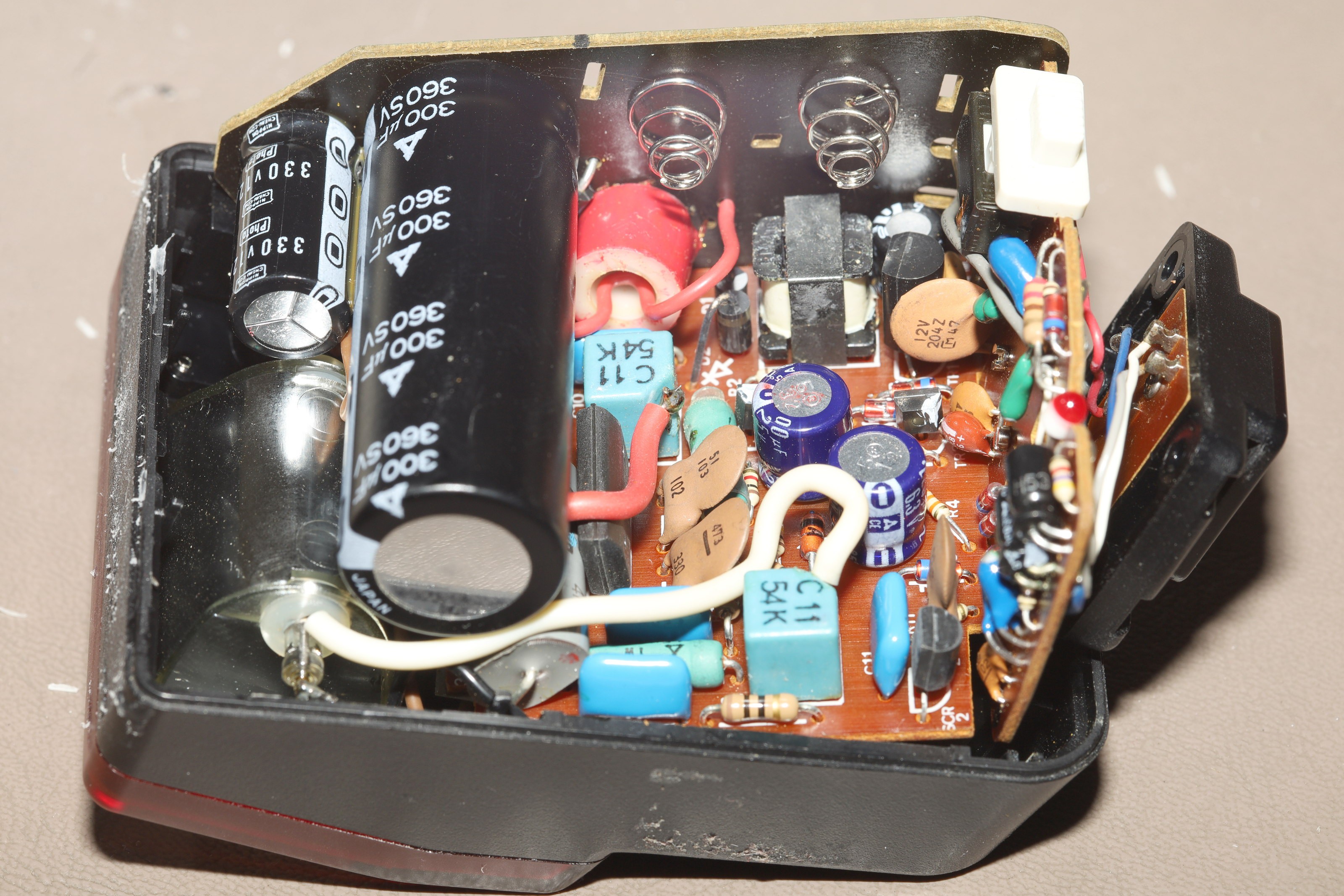
The 80's electronics smell is unleashed. The caps store 313V.
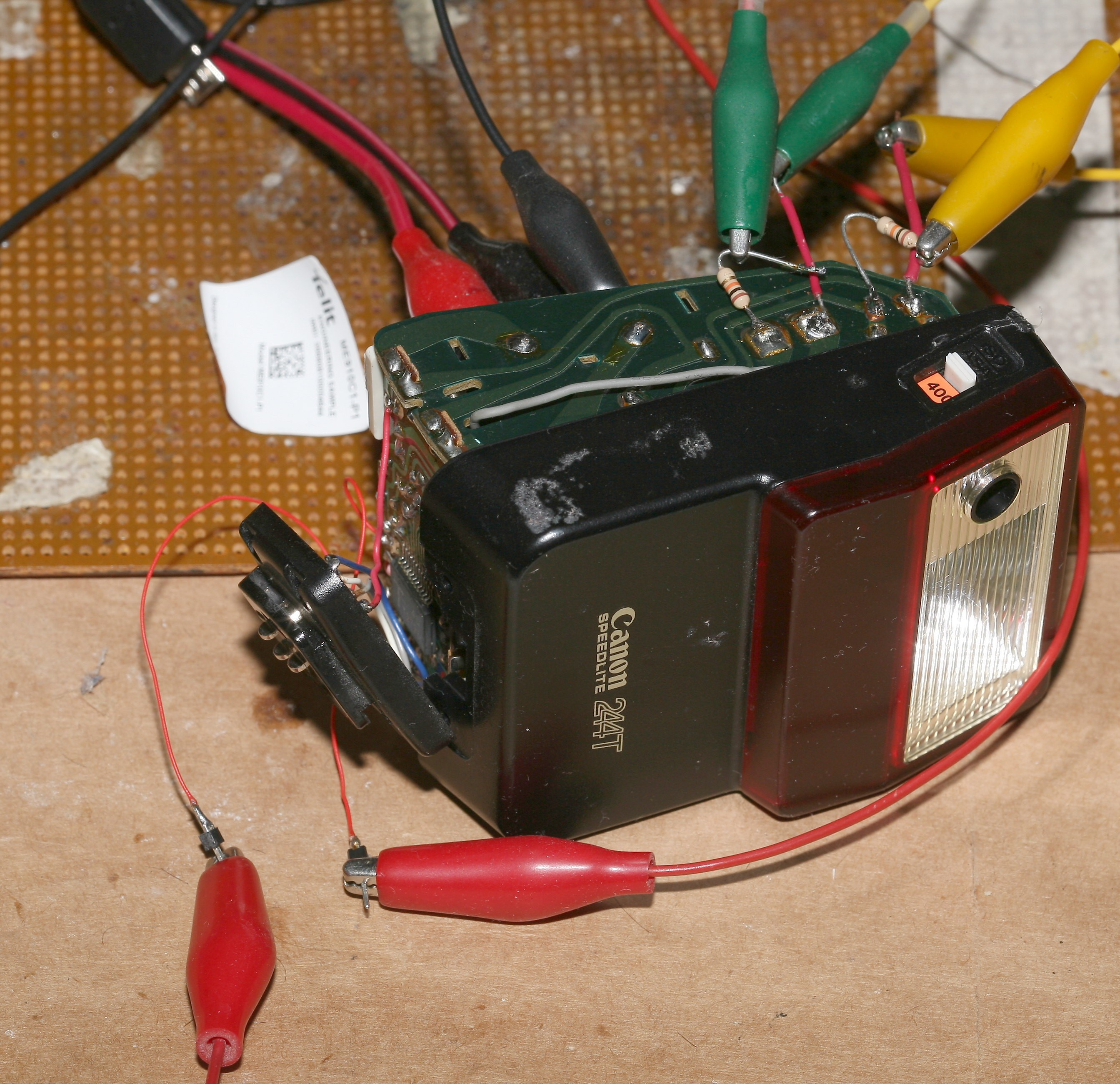
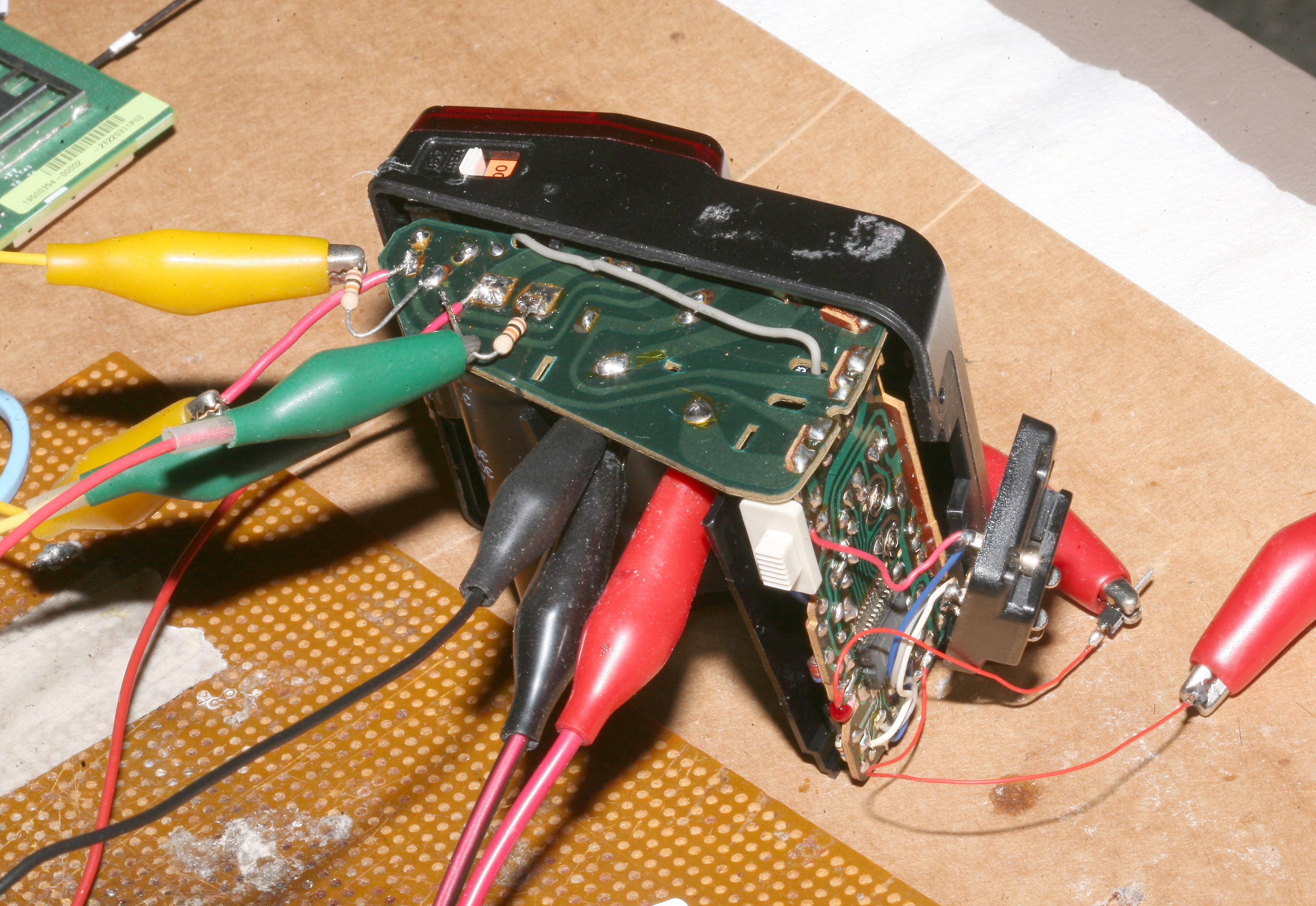
How to probe around 313V. Note the use of jumper cables & 10k resistors to drain the caps.
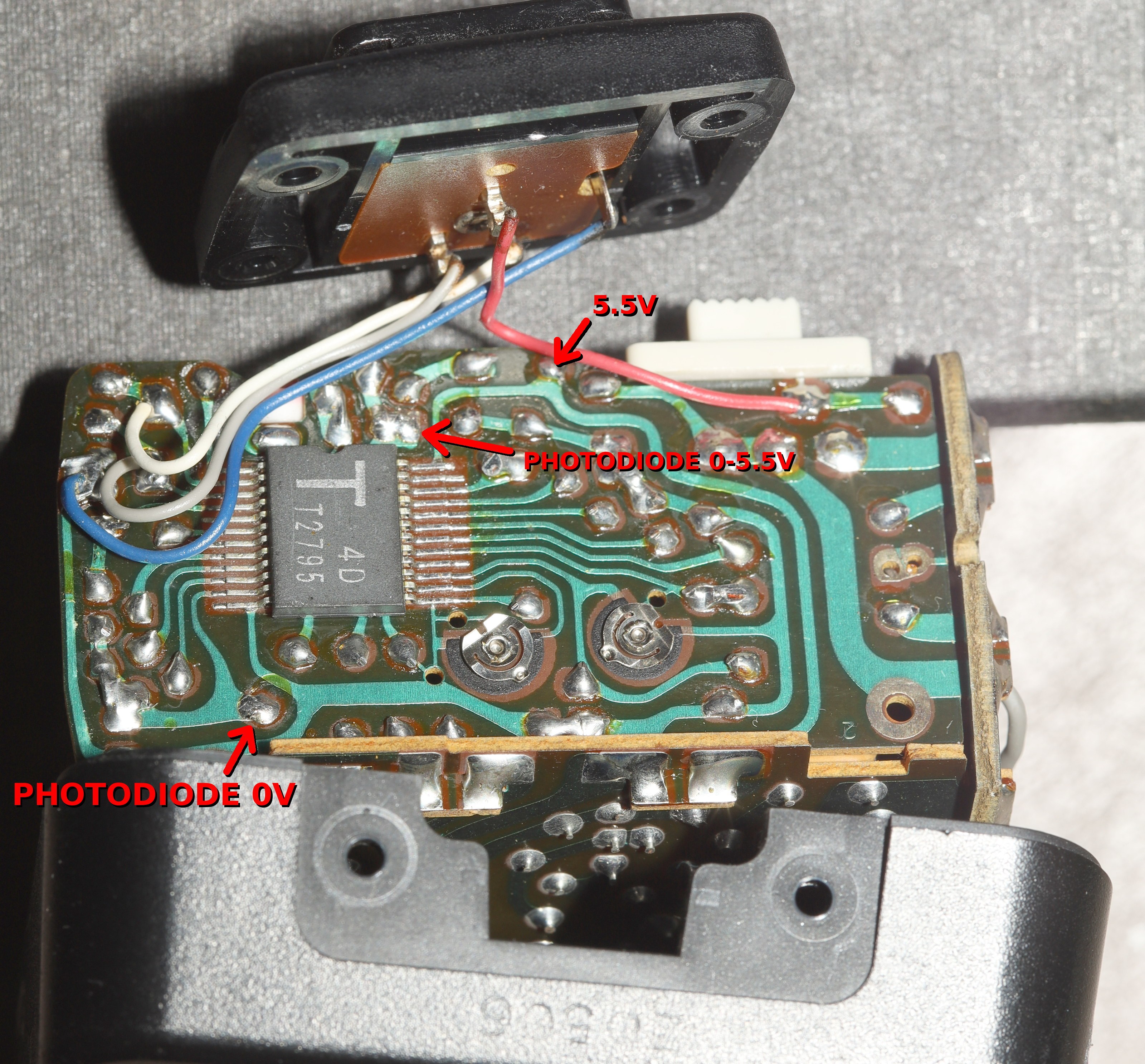
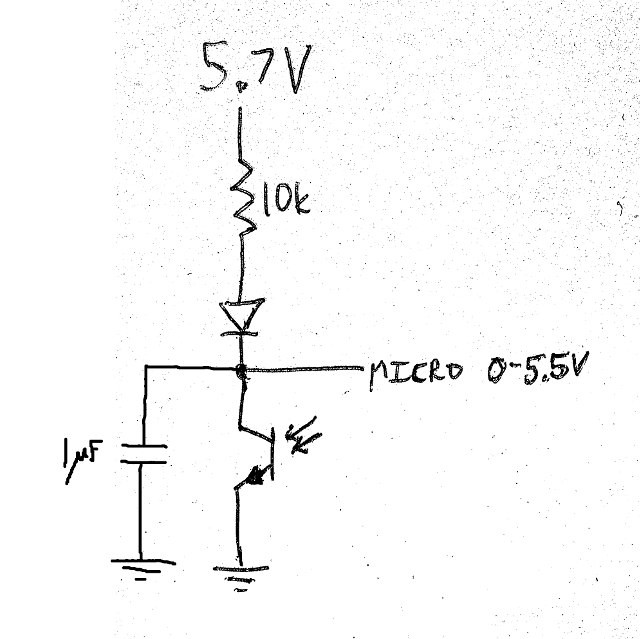
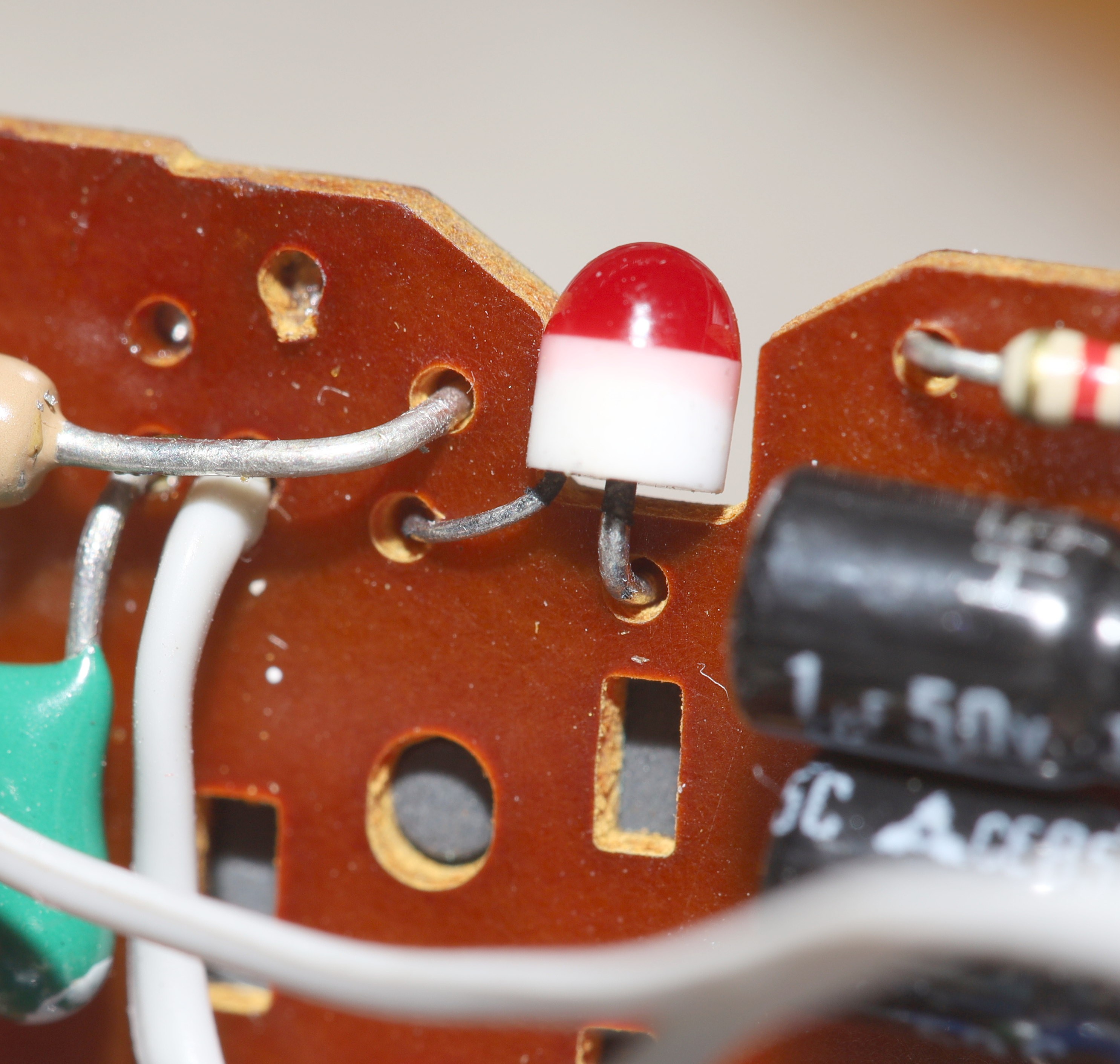
The early 80's LED was fascinating. They were yet to standardize even the lowly red LED's package.
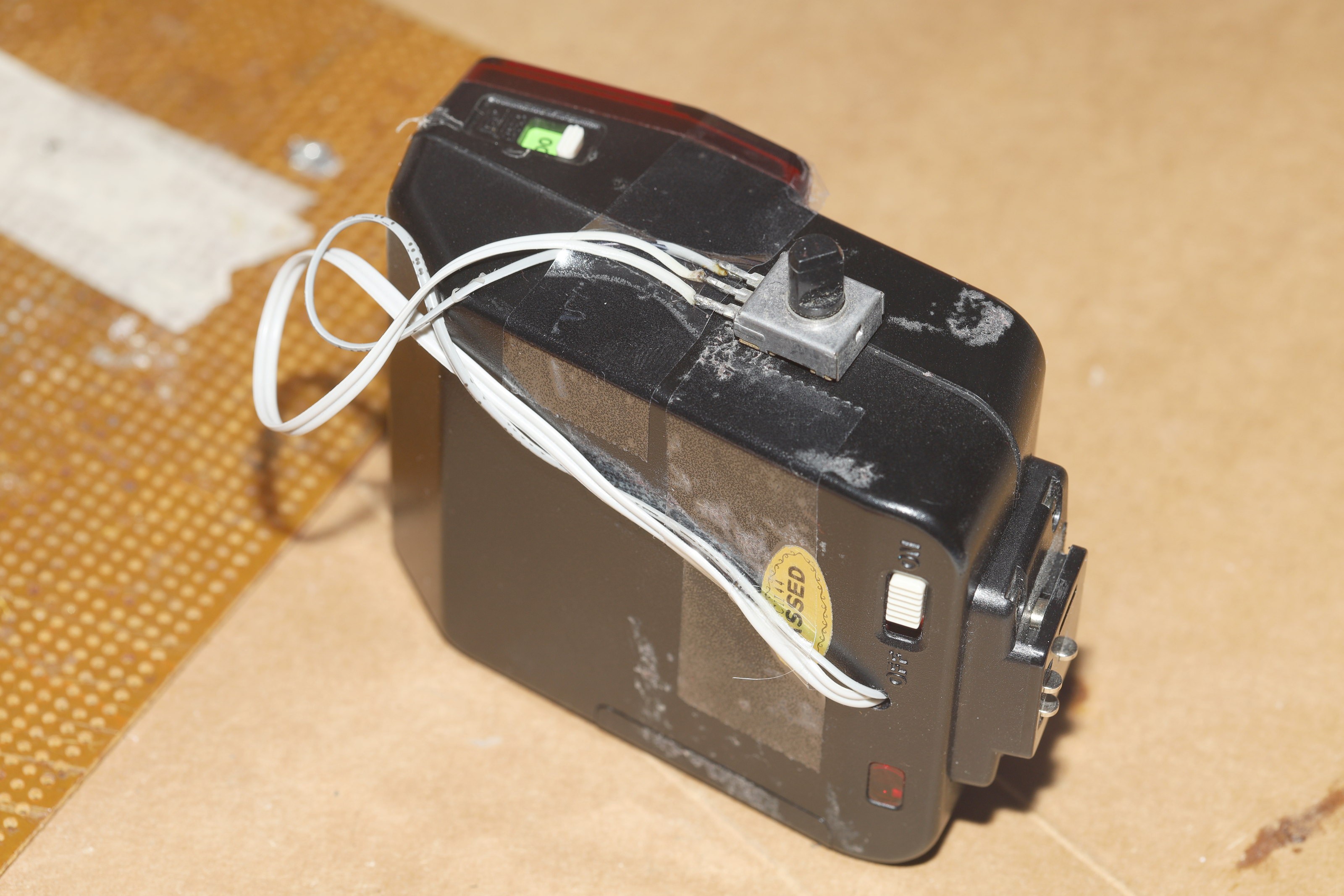
It should have been a matter of replacing the phototransistor with a pot to adjust brightness, but instead, the flash was now at full power for all voltages. A terrible tragedy indeed.
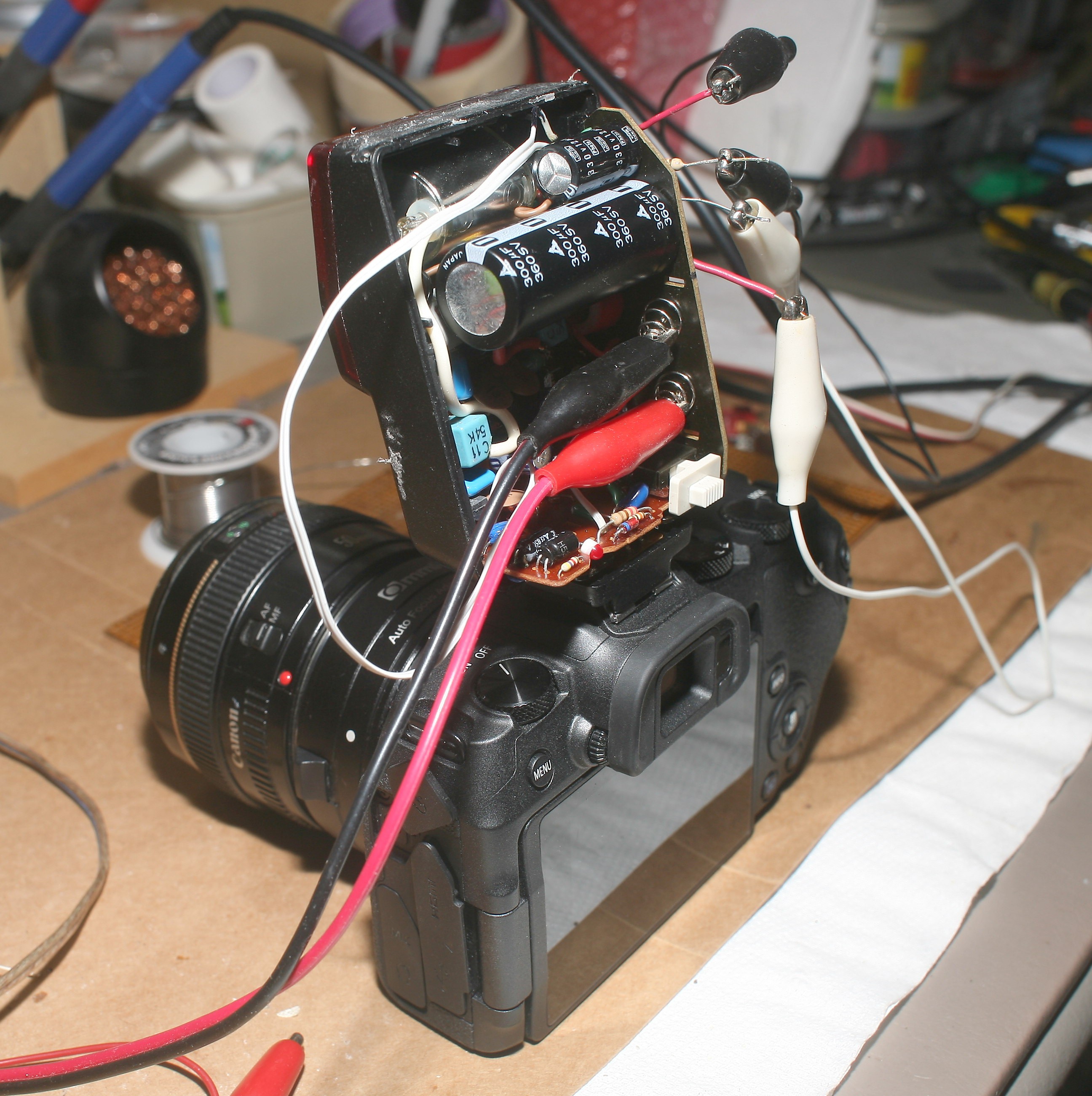
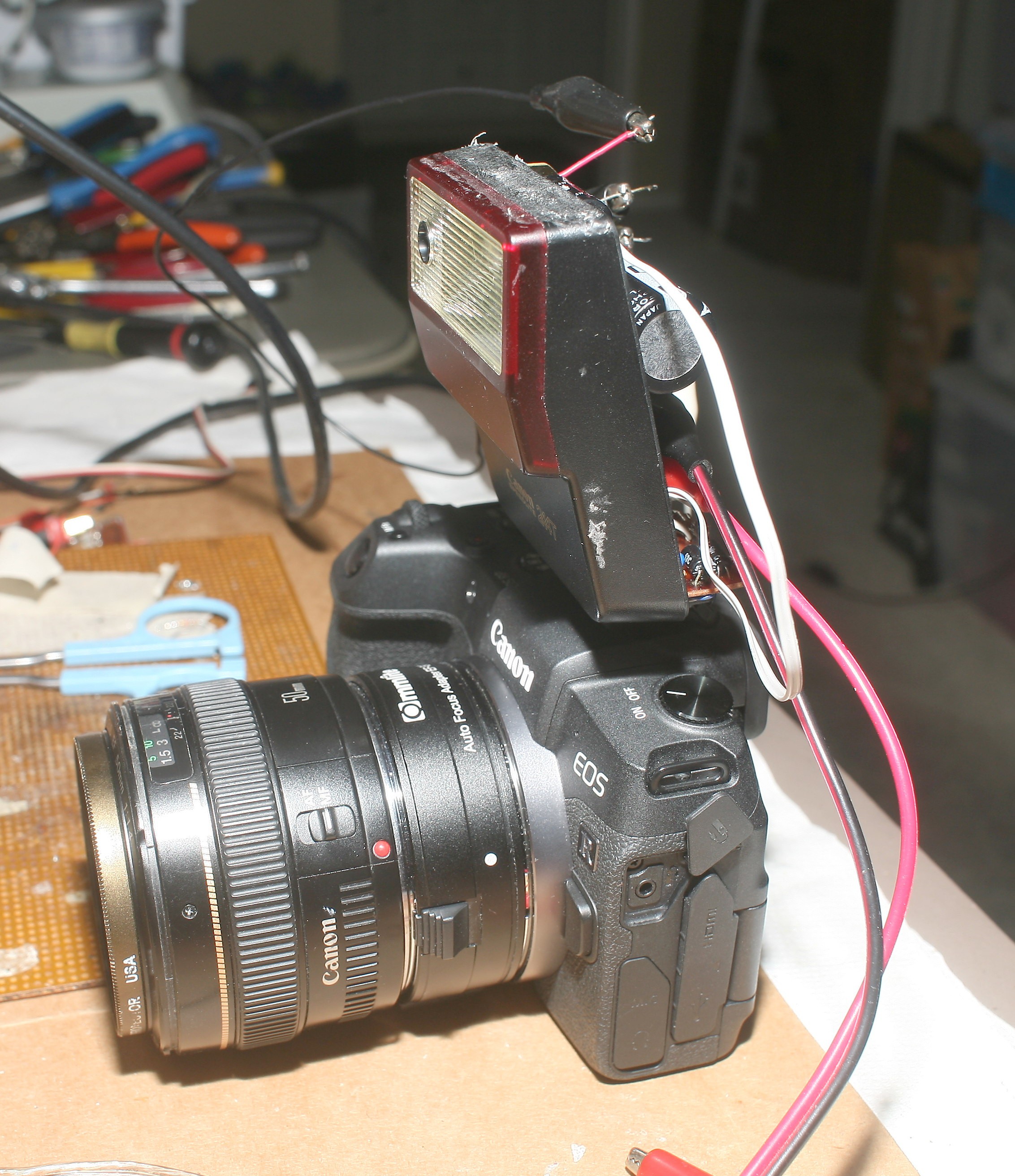
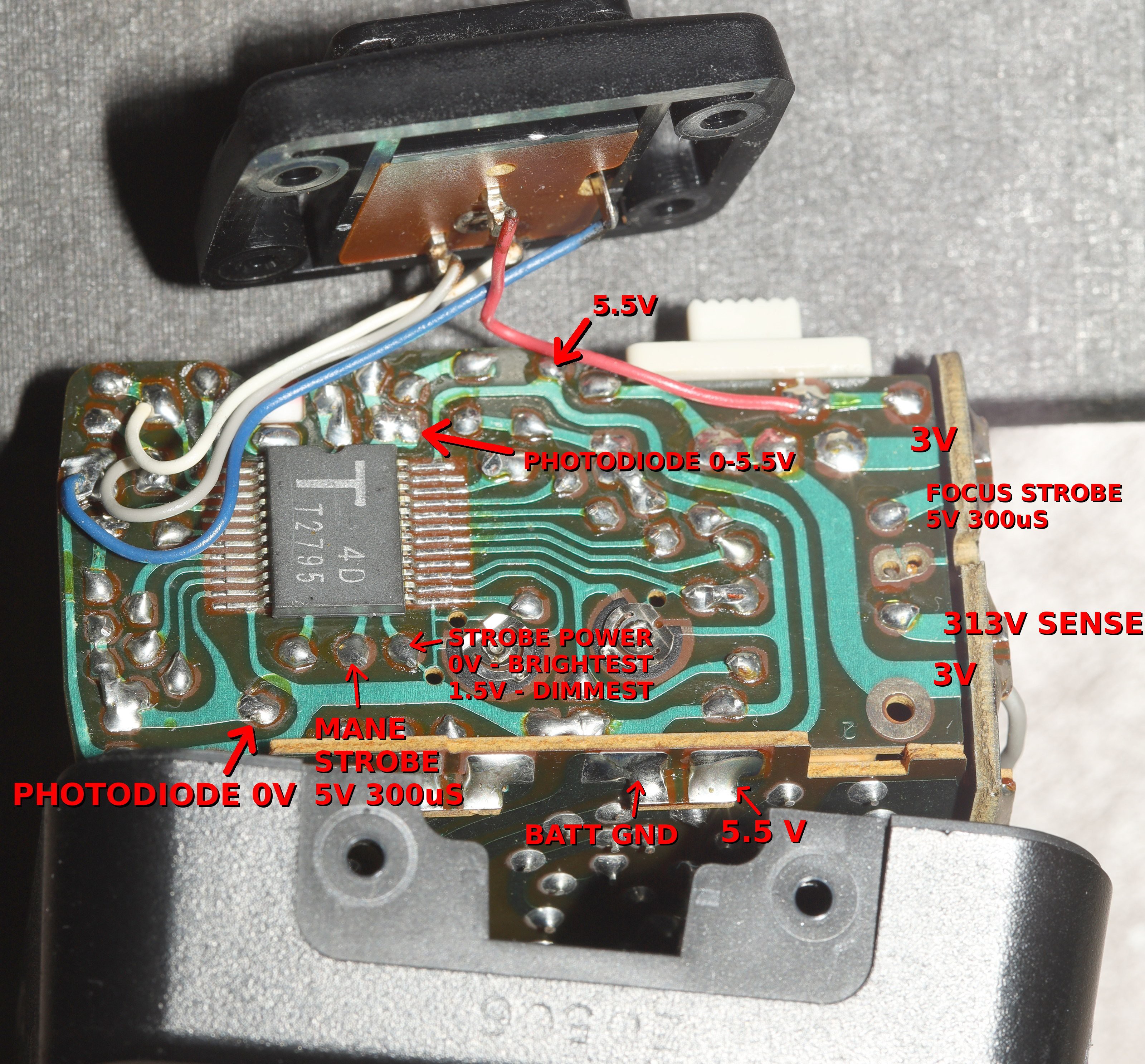
Some more probing revealed the phototransistor is required to get variable output. It's either providing active feedback during firing or the flash requires a certain amount of current into "photodiode 0V". Providing the right voltage to "photodiode 0-5.5V" isn't enough. The voltage divider would need to be the right resistance to guarantee photodiode 0V was also the right voltage.
Some more pins were revealed. It has a 313V pin next to the brain. No concept of a high voltage side & a low voltage side in those days. It has 2 pins to drive the focus & the mane strobes independently. LEDs weren't bright enough to serve as focus illuminators in those days, so it has a completely separate high voltage flash for it.
1 pin sends out 0V DC to cause the brightest flash & 1.5V DC to cause the dimmest flash, but it doesn't change during firing as would be required if active feedback was being used. The strobe duration doesn't change based on brightness, either. It's always 250uS. Holding the 1.5V pin at 1.5V causes the capacitors to drain without flashing. It has to be pulsed with the flash.
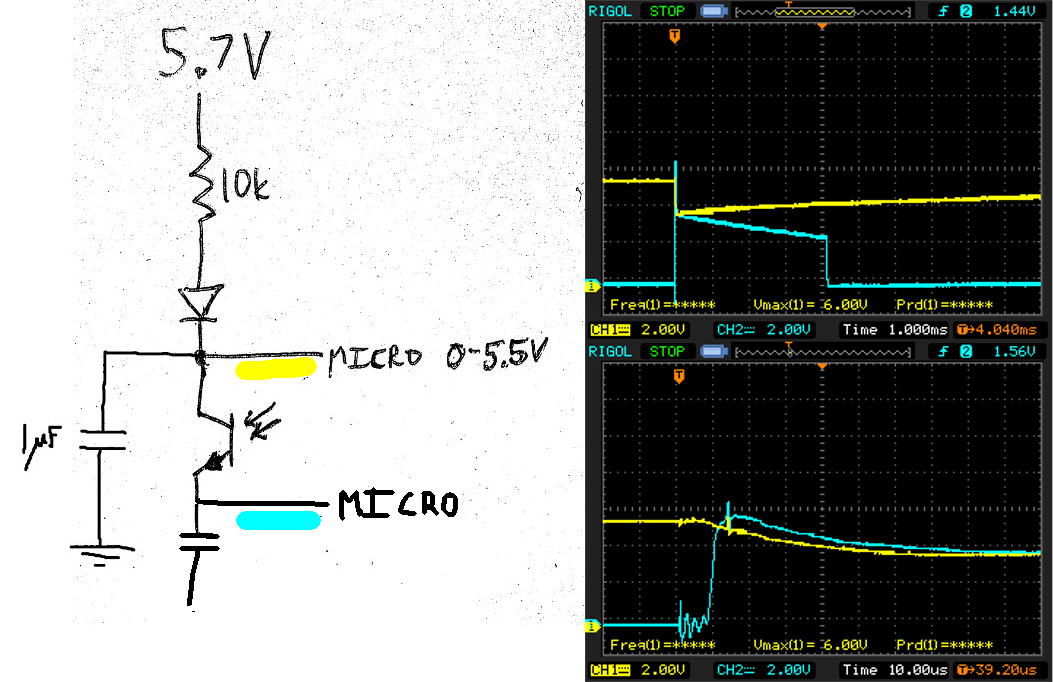
Another probing of the photodiode circuit showed it does create transients during the flash. There's a very long 1/250 pulse in the low side, seemingly activated by the micro. There's a drop in the high side from the light reflecting back to the transistor. The micro uses the amount of transient drop during the flash to determine how long to flash but no signal was ever implicated in controlling the strobe length.
Even with the electronics of 1984, flash exposure algorithms had grown into quite complicated beasts just to get the limited results they gave. Given the complexity of the purely electronic solution, the next idea was just shining an LED into the phototransistor to control brightness.
Shining an IR LED into the phototransistor provides some manual control. ...
Read more » lion mclionhead
lion mclionhead
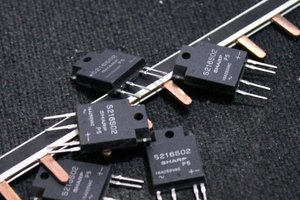
 Yann Guidon / YGDES
Yann Guidon / YGDES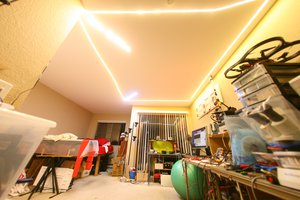
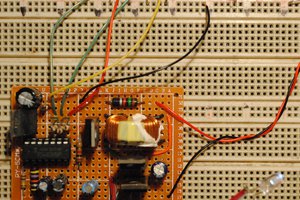
 Nicholas Amrich
Nicholas Amrich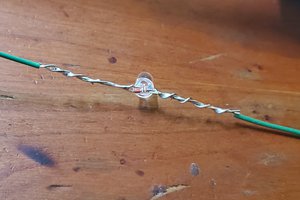
 Martin
Martin
This could be really cool. I've always balked at how expensive flashes have become, with the added "features" to justify the expense seeming like a poor trade-off. Good luck!